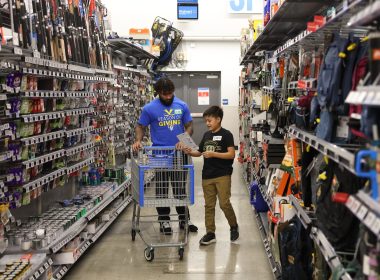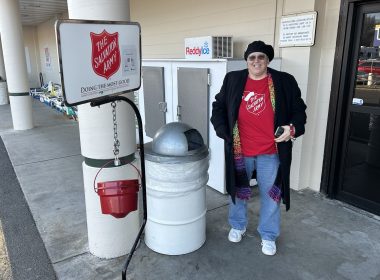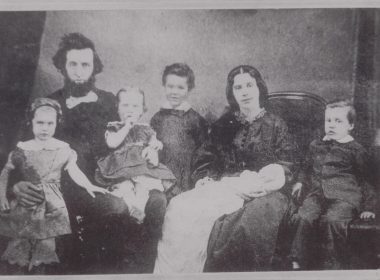I had my twin adolescent grandchildren in the car the other day. They are “great kids.” They’re seniors in high school. I asked them: “What is the number one stressor in your lives these days?” They immediately replied with one voice: “College.”
This surprised me because I know, as with all adolescents, there is a lot going on in their very separate and also very together lives—a lot of internal frustrations, interpersonal tensions, and conflicting responsibilities. Their focus on a future issue was unexpected. The more I thought about it, however, the more it made sense. The one word summarizes a plethora of decisions to make, locations to explore, income and scholarships to seek, goals to assess.
Moreover, in Western culture the word “college” defines the most common and acceptable means to delay the end of the adolescent period and postpone the pain and pressures of adulthood.
College also reinforces our love affair with numbers as an accurate depiction of success or failure. Measuring up seems so public. It pushes “hard data” into the foreground. It demands tangible, measurable objectives so essential in our current way of thinking. If you can’t measure it, it’s worthless. It seems, in all schools throughout the nation, that it’s more important to measure something than to live it instructively. These scores are the means by which the individual proves worth, the way a school demonstrates its excellence, or a teacher preserves a job. I only hope it provides the meaning and relevance of life that most adolescents seek.
Movement from childhood to adolescence to adulthood becomes a significant challenge. It’s not an easy series of transitions, and there’s no choice available. Adolescence is the doorway to a period of tension and conflict so necessary to growth. Conflict always leads the way to change.
“It might be a dark and gloomy Friday—but Sunday’s comin’”
Peter Blos, writing on developmental issues in his book The Adolescent Passage, examines it this way:
The environment of the child, as well as the child himself, gain in complexity with advancing years and with the ever-expanding world of a mutually eliciting, rejecting, and neutralizing interplay of forces.
In the simplest terms, we can say that, with the advent of sexual maturation, cognitive leaps to higher levels, and new physical capabilities, a thrust away from infantile family dependencies into the wider social milieu becomes not only feasible but mandatory.
That “interplay of forces” in the face of an “expanding social milieu” can become the crucial focus of informal, soft-sell parental conversations with developing children beginning in the pre-adolescent years. These are not lessons, not specific “let’s talk” sessions, not a list of do and don’t rules. These communicate confidence in the other in subtle, often non-verbal ways that deal with the parent’s concept of the interplay of forces in the ever expanding social milieu that comprises the life of the child.
Parents need to remember that the positive teaching tool for parents is through modeling, and the least effective is lecturing.
It is true, as I have said many times in this space, that people tend to take on the characteristics of those with whom they choose to associate. Adolescents, in their “thrust away from family dependencies,” begin to transfer this function to their peer group. Many of them, if unprepared, become swallowed up by differing value systems, different beliefs about themselves and their world, different attitudes toward right and wrong. Some of them begin to make dangerous moral choices. Some are so safe growth is impossible.
This, of course, leads to some examination of the entire nature of morality—at least 18 units of graduate education involving the question: “What is ‘good’ or ‘moral’?”
I can only provide some of my own unfinished thinking around such important words as “ethical,”—a philosophical term that is certainly involved. It explores moral values in relation to human behavior—also certain professional codes requiring or prohibiting various types of conduct within given professions.
I’m examining my morality in terms of its “consistency.” I want to be consistent while at the same time, I resist the nature of rigidity. I wonder how this relates to “habit,” and what do I do if there are “rights” in conflict and my commitment to consistency requires me to do damage to someone else. I must admit that my own sense of right action falters in support of not doing damage.
And what about “conscience”? It’s definitely involved. I believe it’s a lot more than a demand not to violate some ingrained habit from past teaching. I tend to agree with Gordon Allport who sees conscience as “generic self-guidance.” He believes self-respect is what keeps us on a positive moral course.
Are there specific moral principles? Lawrence Kohlberg certainly believes such exist. He states: “The most essential structure of morality is ‘justice,’ and the core of human justice is the distribution of rights and duties regulated by concepts of ‘equality’ and ‘reciprocity’”—where we treat others the same way we would like to be treated.
So—I know when my conscience speaks to me; I know when a choice may impede my view of God; I know when to be consistent and when to be sensitive to the needs of others; I know, like all other humans, however, I’m far from perfect.
Oh yes, back to the twins. After they said “college,” I said: “I have confidence to believe you’ll see yourselves safely and courageously through this important phase of your life. Anytime you want to talk, I’m ready.”











